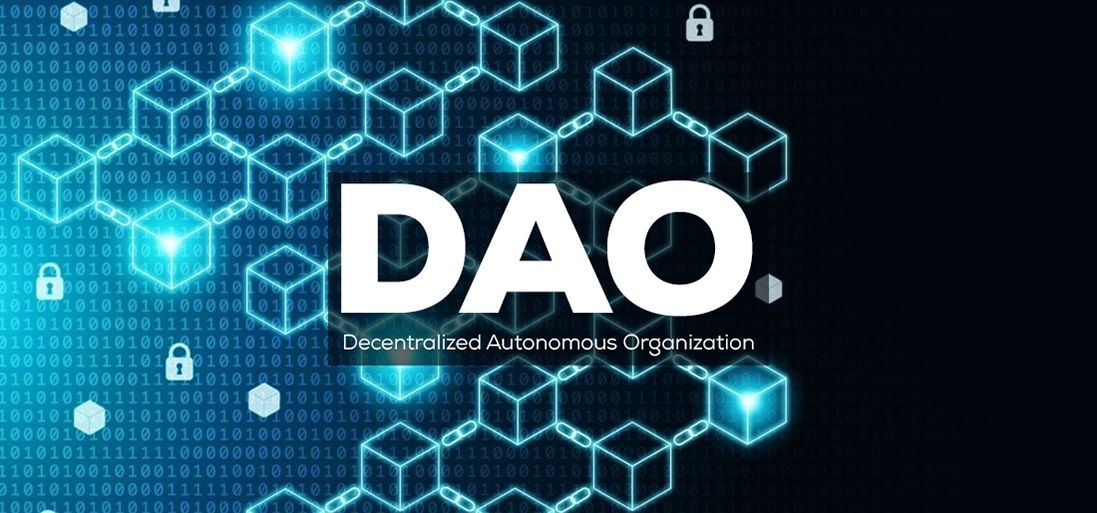DAO (decentralized autonomous organization) is one of the key concepts of Web3 technology. This is an organization whose members interact with each other according to the rules written in the code, using smart contracts.
Below is a comparison of the main points of the standard approach and the approach in the DAO organization:
|
Standard organization |
DAO organization |
|
Has clear decision makers |
All members of the organization are involved in decision making |
|
Proposals are put forward and approved only by individual leaders |
Any DAO member can submit a proposal for discussion, which will be considered by the community |
|
Voting in the management group (1 person = 1 vote) |
Voting with tokens (the more tokens a participant has, the higher the weight of his vote) |
The principal-agent problem
The principal-agent problem is a key one that decentralized organizations can solve. The essence of the problem: there is a principal who has a request (need). One delegates meeting the request to an agent. The agent must act in the interests of the principal, but in some cases, their interests may diverge. A couple of examples:
Example 1: voters—politicians. Voters (principals) transfer by voting the authority to make political decisions to a politician (agent). The interests of voters are not always satisfied by a politician, because they can act with completely different motives. The result is that the transferred powers are not executed in the interests of the principals.
Example 2: employer—employees. The employer (principal) wants the company to work efficiently and earn a lot with the help of the labor of the employee (agent). The employee wants to receive a lot of money and not be very tired, so they do not fulfill the assigned powers to the fullest.
How a DAO solves the problem
In these examples, it is a performance problem generated by a conflict of interest. As part of a DAO, all participants are interested in the result:
· They submit proposals for discussion (anyone can be the principal);
· They jointly decide (i.e. everyone is also the agent);
· The implementation of the solution occurs without the participation of a person.
The decisions which can be made in this way:
1. Expenditures;
2. Decisions on the amount of commission payments;
3. Decisions on new rules and regulations for DAO participants, etc.
The concept described above is a concept of direct democracy (everyone can propose a decision and vote). However, this concept may have disadvantages:
● The participants’ competence is insufficient to make informed decisions;
● The more voters, the longer any decision will take.
Therefore, there is an alternative way to manage in DAO, which is more like the standard management in an organization. With this method, there is an elected body (a certain number of community members) that takes on operational decisions.
However, there are specific details about that:
● If the opinion of the elected group does not suit any participant, they can veto such a decision;
● At any time, the community can revoke the powers of any elected member through a vote.
Two ways of starting a DAO
A prescriptive DAO is an organization where the rules of the game within the community are already described, there are tools and ways of interaction. As a rule, such an organization is created by a group of developers, after which everyone can join it who likes the way the organization works.
A descriptive DAO is an organization created with the help of the entire community. The participants are the developers and initiators of ideas, decisions on changes are made within the concept of direct democracy.
How is a DAO created? Three basic steps
1. The developer (or the development team) creates a smart contract on the basis of which the DAO will work. Changes to the contract after its publication can only be made using a voting system and distributed control, so errors at the design and creation stage of the smart contract are critical.
2. The next step is setting up DAO’s funding. As a rule, tokens are issued at this stage, by purchasing which community members receive the right to vote within the DAO.
3. Next is its deployment on the blockchain. After the deployment, developers can no longer make changes on their own, only through the community and distributed voting.
DAO types by application
Consider the main types of DAO and their key characteristics:
· Investors DAO. These DAOs are created by a group of investors who raise funds to invest in a project using tokens. Decisions on the project are made on the basis of voting. The distribution of profits is made through smart contracts.
· Curators DAO. This is a type similar to Investors DAO, but focused on developments and projects in the field of crypto art and NFT.
· Protocol DAO. These are organizations that, after launching their protocol, issue tokens and distribute them among users. Here, the community does not solve all the issues of the DAO setup, but can take part, for example, in decisions: the size of commissions, how tokens are distributed on farming.
· Project DAO. The most "classic" type. Having tokens of a project or company, community members receive profit from the project (in accordance with their tokens) and can participate in decision making. The purpose of Project DAO is to create projects or products that will bring money to creators and investors.
· Community DAO. These are projects where participants unite around some idea and work together on it. Accordingly, the project (or projects) receives funding and involved participants with expertise.
· Creator DAO. These are projects where the community unites around a popular person or any famous creator to support his creativity. In return, members of the organization receive some privileges, closed shows, and so on.
· Guilds DAO. Those organizations that consist of freelancers. Members come together to offer their services to companies. The distribution of remuneration is carried out among the project participants in accordance with their contribution.
Advantages of DAO
The issue of trust is solved. There are no personal relationships between people as such, there are prescribed interaction algorithms that will clearly determine what and how should happen within the organization.
One can't just close it. In the case of a DAO, a situation is impossible when some government agency (or owner) comes and decides that the organization should no longer exist. Decisions in the DAO can only be made by the entire community.
Open source. In DAO organizations, the code is available to all participants, and therefore is considered more secure than private code, since everyone can suggest improvements.
What about disadvantages?
Theft of ideas. The last advantage can also be a disadvantage, since anyone can see the source code of the smart contract, and if some new ideas were used in the development, then anyone can take them for themselves.
This also includes susceptibility to hacker attacks. The openness of the code makes it possible not only to improve it, but also to find vulnerabilities in it. A high-profile example is the DAO hack wherein an attacker stole about $50 million.
Uncertainty in terms of legislation. Citizens of any country can be members of the DAO, but the laws of countries differ or simply do not have tools that would regulate relations in the DAO.
To be said in the end
DAO is a promising management model that is already being used, albeit not yet widely. Thanks to decentralized management, there is a chance to create strong communities where each participant will be interested in development and growth, and all decisions are made simply and transparently.








